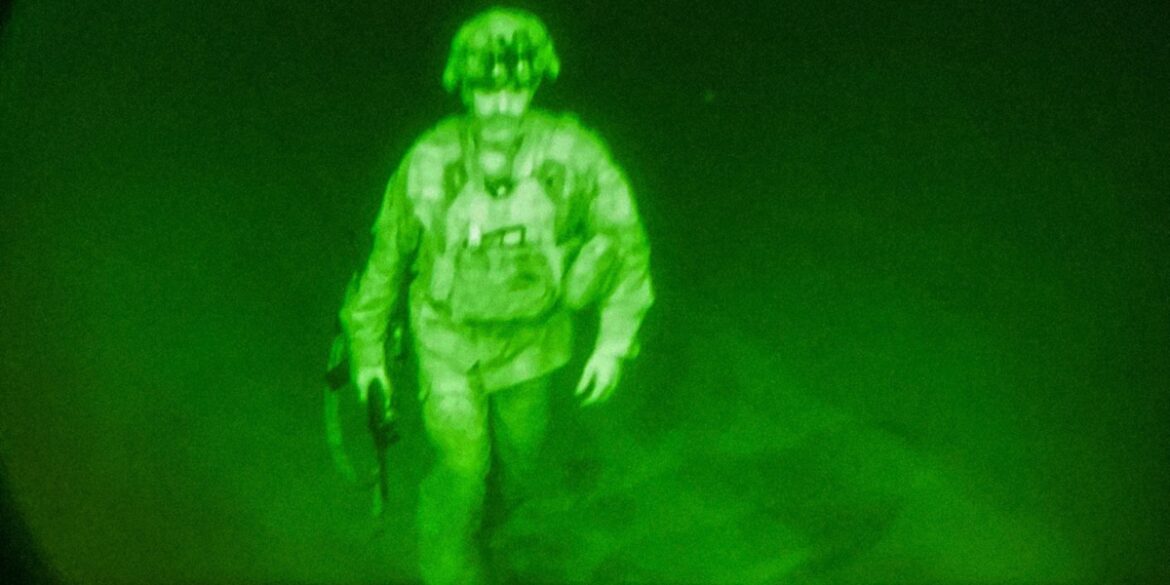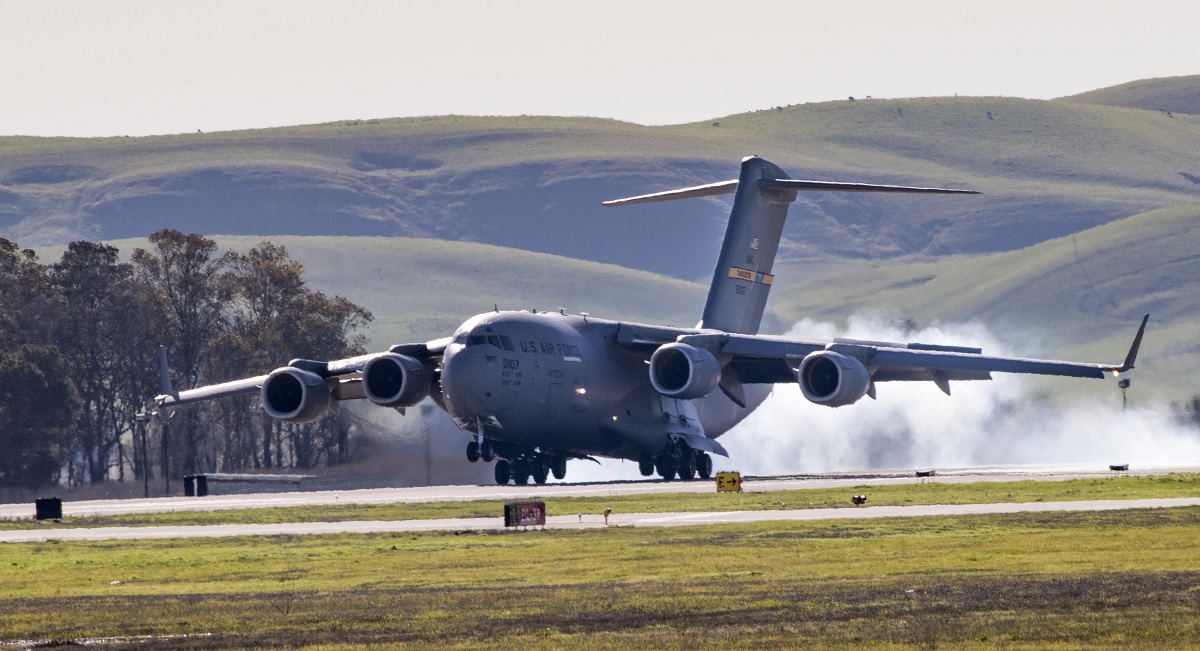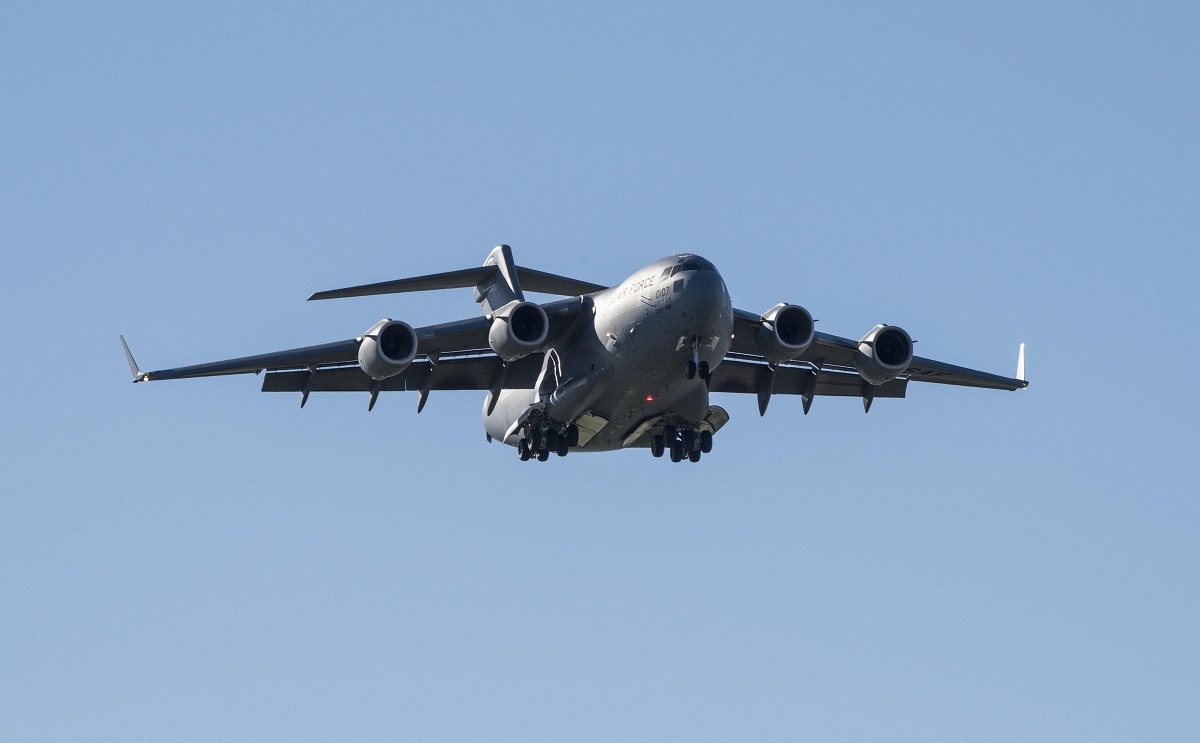Eight C-17 Globemaster III aircraft, seven KC-10 Extender aircraft, and one C-5M Super Galaxy aircraft were used by Team Travis to transport 10,310 refugees and 2 million pounds of airlifted cargo
Operation Allies Refuge, which witnessed the effective evacuation of 124,334 people from Afghanistan, was the US Air Force’s (USAF) greatest non-combatant evacuation operation in US history.
“We love data. We can roll numbers and metrics into a report to demonstrate effect,” said Chief Master Sgt. Keith Scott, 60th Air Mobility Wing command chief, during an event earlier this year. “For this operation alone, I could rattle off countless more stats that attempt to capture the impact of our Travis Airmen, but so much of what made this operation incredible was not what we did… rather who did it and how.”
According to Nicholas Pilch, 60th Air Mobility Wing Public Affairs, Operation Allies Refuge: One year later, there were 347 Airmen in total, 202 support personnel, and 143 aircrews readily available for deployment from the 60th Air Mobility Wing. That means a 45-minute notice for some airmen. These numbers, however, do not take into consideration the Travis AFB Airmen who have already been sent to other sites to assist with this operation.
“I found out on August 24. I had just gotten off a night shift, and I went to bed about 7 a.m.,” said Airman 1st Class Thomas Gustafson, 60th Aerial Port Squadron fleet apprentice. “I got a call at 10 a.m. asking if I had my COVID vaccine and my GTC (Government Travel Card), and I said yes. Approximately 45 minutes later, I was sitting in a briefing, getting ready to leave.”
Eight C-17 Globemaster IIIs, seven KC-10 Extenders, and one C-5M Super Galaxy were used by Team Travis to transport 10,310 refugees and 2 million pounds of cargo.
The medical task group at Afghanistan’s Hamid Karzai International Airport consisted of a total of 62 Air Force medics. 29 of those medics, or roughly 50% of the whole Air Force medical force, were from Travis AFB.

“We found out that we would have to go to the Hamid Karzai International Airport Hospital, which is a NATO-run hospital,” said Senior Master Sgt. Louella Campbell, 60th Medical Group and Task Force Medical-Afghan austere ground surgical team and administrator. “We were just going to go there for maybe a couple of weeks to help things settle down and potentially take over, if necessary until we completely withdrew forces, but we stayed to the end.”
Security personnel escorted aircraft to ensure their safety, and the team lead for the 60th Security Forces Squadron Phoenix Raven was Staff Sgt. Riley McFerran. McFerran related how he was 30 minutes away from his C-17 when he received a note alerting him to the possibility of two young suicide bombers on the flight line.
“When the aircraft landed, it was pitch black, and only tracer rounds could be seen flying through the air, said McFerran. “I stood there in complete darkness with my night vision goggles on, looking for any possible threats, when I saw a sea of glow sticks and hundreds of army personnel walking up to the jet with their rucksacks and all their gear on. As soon as they boarded, we loaded them up, and the reaction and relief on their faces was heartwarming to see.
“While we were leaving, the aircraft took fire. We popped off flares, but no rounds hit the aircraft, and all of us were able to leave the airfield unscathed.”
The 60th Aeromedical Evacuation Flight Nurse, Capt. Kayleigh Migaleddi was heading to the Abbey Gate in Kabul when a newborn baby was handed to her and passed over the fence, forcing her to head elsewhere.
“August 26, 2021, at 5 p.m., I was tasked by a doctor to report to the Abbey Gate to assist in a medical emergency,” said Migaleddi. “On my way to the gate, three Marines handed me a beautiful baby girl that we later called ‘Joy.’ I was told that Joy was tossed over the fence in hopes for a better life.
“While taking care of Joy, I received an alert saying there was a mass casualty event at the Abbey Gate, the gate I was headed to before Joy was handed to me. Baby Joy saved my life so I could help the patients who had arrived at the hospital.”

In addition to the effort being made by support personnel on the ground, aircrews were also expeditiously evacuating residents of Kabul. Capt. Marcial St. John, a C-17 pilot with the 21st Airlift Squadron, spoke about the challenges of transporting refugees to other theater locations and how they moved the first plane loaded with Afghan nationals to Isa Air Base, Bahrain.
The KC-10s were modified for passenger transport after Lt. Col. Gary Sain, the pilot of the 9th Air Refueling Squadron’s KC-10 Extender, and Capt. Marcelli Magday, the 660th Aircraft Maintenance Squadron’s maintenance officer in command, were expecting an aerial refueling mission.
“This is part of history. This doesn’t happen every day,” said Magday. “For me, the most rewarding part was meeting them at the bottom of the stairs and seeing the looks on their faces, thinking, ‘wow, this is what I joined the Air Force for.’”
While visiting family in Afghanistan, some who had been evacuated from that country desperately needed a lift out.
“I was talking to one of the moms of one of my kids’ teammates, and she was in Afghanistan visiting her family in July and left right before everything happened,” said Sain. “Her sister, also visiting, actually ended up getting stuck there and was evacuated on a C-17. She eventually made it out and back to the States through the way of our efforts.
“It’s like this giant operation that happens, and then it’s over now that it’s not affecting my day-to-day life,” he continued. “Every one of those 120,000 people, they’ve got a story, and they’re still living with it.”
Photo by U.S. Air Force






